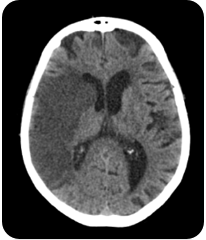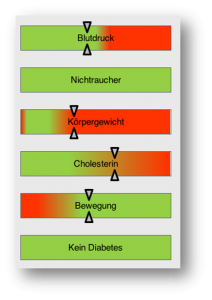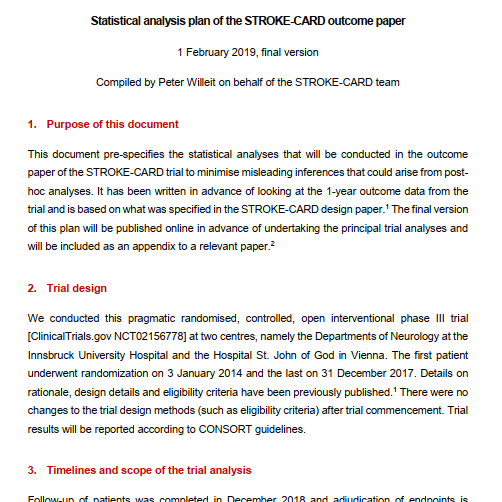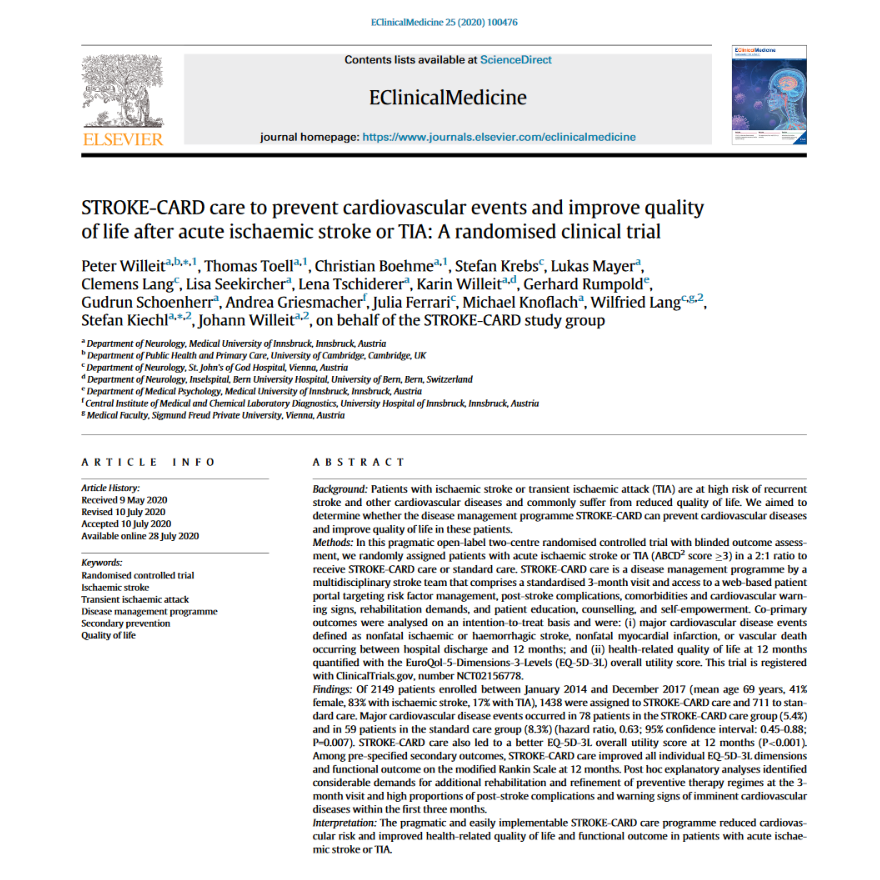Motivation for this clinical trial

The STROKE-CARD programme
STROKE-CARD is a multifaceted pragmatic disease management programme in patients with an acute stroke or high-risk transient ischaemic attacks. It combines intensified multi-domain secondary prevention, detection and treatment of post-stroke complications, and patient self-empowerment. Patients have an additional in-hospital appointment three months after the stroke event to re-assess risk factors and monitor post-stroke complications. Furthermore, they can access an online portal, where they can enter risk factor information (such as blood pressure, body weight, amount of cigarettes smoked, time physically active) and receive personalised feedback.
Our principal hypothesis is that the STROKE-CARD programme could help reduce the occurrence of cardiovascular events and lead to a better quality of life after 12 months of follow-up.
To test this hypothesis, we recruited patients at two trial centres: (i) the Medical University of Innsbruck and (ii) the Krankenhaus Barmherzige Brüder Wien. Patients with an acute ischaemic stroke or a transient ischaemic attack (TIA) of an ABCD2 score ≥3 were included.
Data of the STROKE-CARD trial are cleaned, harmonised and analysed by members of the clinical epidemiology team (Peter Willeit, Lisa Seekircher, Lena Tschiderer).


The STROKE-CARD Study Group
Principal investigator: Johann Willeit
STROKE-CARD data management and analysis centre: Lena Tschiderer, Lisa Seekircher, Peter Willeit
Study group: Markus Anliker, Christian Boehme, Julia Ferrari, Martin Furtner, Andrea Griesmacher, Viktoria Hasibeder, Stefan Kiechl, Gerhard Klingenschmid, Michael Knoflach, Stefan Krebs, Clemens Lang, Wilfried Lang, Lukas Mayer, Anna Neuner, Raimund Pechlaner, Thomas Porpaczy, Gerhard Rumpold, Christoph Schmidauer, Gudrun Schoenherr, Lisa Seekircher, Martin Sojer, Christine Span, Lydia Thiemann, Thomas Toell, Lena Tschiderer, Marlies Wichtl, Johann Willeit, Karin Willeit, Peter Willeit.
Statistical analysis plans and publications





